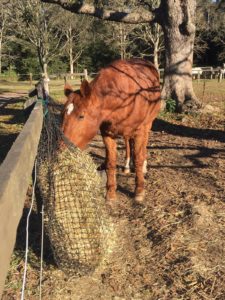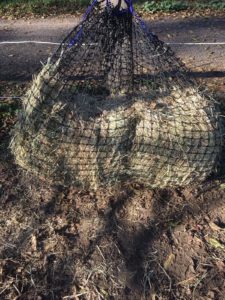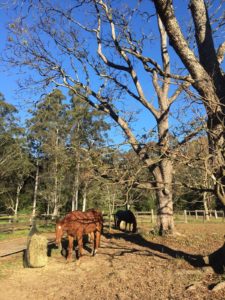The Benefits of Slow Feeding Horses
Did you know horses have evolved to survive on continual foraging of pastures and naturally spend between 16-18 hours per day grazing? Horses have sensitive, prehensile lips and tactile hairs which allow them to select short pieces of forage and pick up fine particles of food. This allows them to be extremely selective and concentrate their grazing on preferred feedstuff.
Horses have a small stomach for their body size, which begins to empty when it is two-thirds full, whether the food in the stomach is processed or not. It is recommended to feed small, frequent meals to keep the gut neither full nor empty, this also helps to reduce the incidence of gastric ulcers.
Horses who are fed 1-2 large meals per day may not be absorbing adequate nutrients and their physiological and psychological needs may be thrown into turmoil. Many vices including copraphagia (eating faeces), crib-biting, wind sucking and bedding consumption may be caused by insufficient frequency or volume of feed.
It is important to provide horses with frequent access to feed throughout the day and night. Horses should receive a minimum of 1% of their body weight in roughage per day.
Providing ad lib access to hay is a good substitute for pasture during drought or if horses are kept in a stable or yard. Slow feeders are a great addition to your horse’s paddock as they allow your horse to graze hay in a naturally continuous manner that simulates pasture grazing. The chewing promoted through constant access to roughage causes an increase in saliva which contains bicarbonate and buffers the continual acid secretion within the stomach, reducing the risk of gastric ulcers which can significantly impact performance and body condition.
Feeding small feeds often also reduces fluctuations in blood glucose and insulin and may prevent the development of vices and decrease the risk of digestive upset and metabolic disorders including hindgut acidosis and colic.
Top Tips for using Slow Feeders in your paddock:
1. Offering different types of hay such as Lucerne and Meadow Hay
2. Ensure your slow feeder is protected from the elements to prevent it from getting wet and spoiling.
3. Ensure your slow feeder is off the ground so it doesn’t sit in the mud and to help prevent your horse’s shoe getting stuck from pawing.
4. If you have more than one horse in the paddock, ensure there is a separate slow feeder for each horse to have its own.
5. Make sure you provide appropriate quantities for horses that are prone to obesity, laminitis or metabolic disease.
Check out our example of slow feeding here: d671bec5-cfe8-4058-9814-eb32b6b7094a



Experts in Equine Nutrition
Every product in the Ranvet range has been developed to meet a horse’s most specific need at any given time, be it in a training environment or on a breeding farm. Having pioneered the formulation of specific medications and dietary supplements for horses, the company is now recognised as a leader in the areas of equine health and nutrition.
